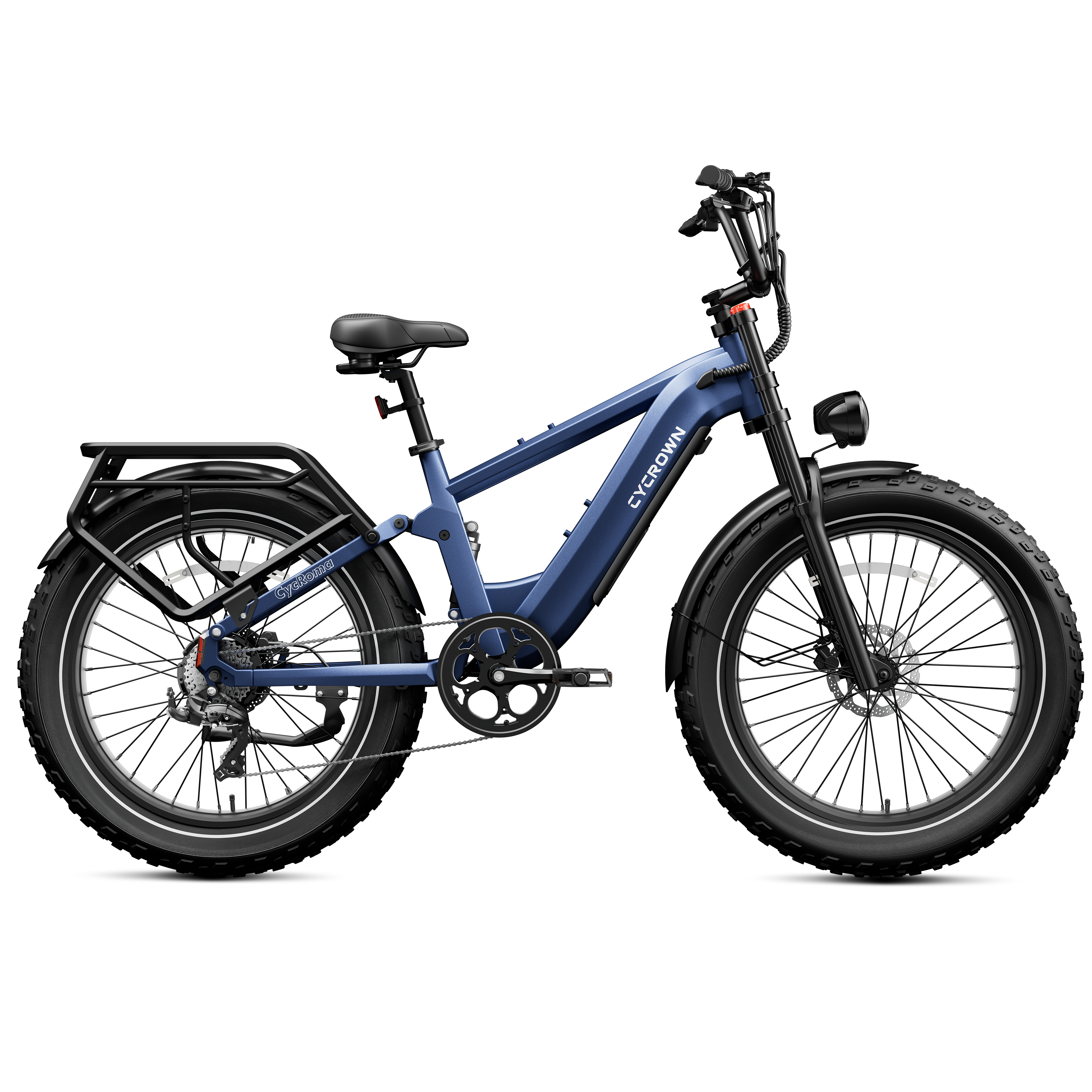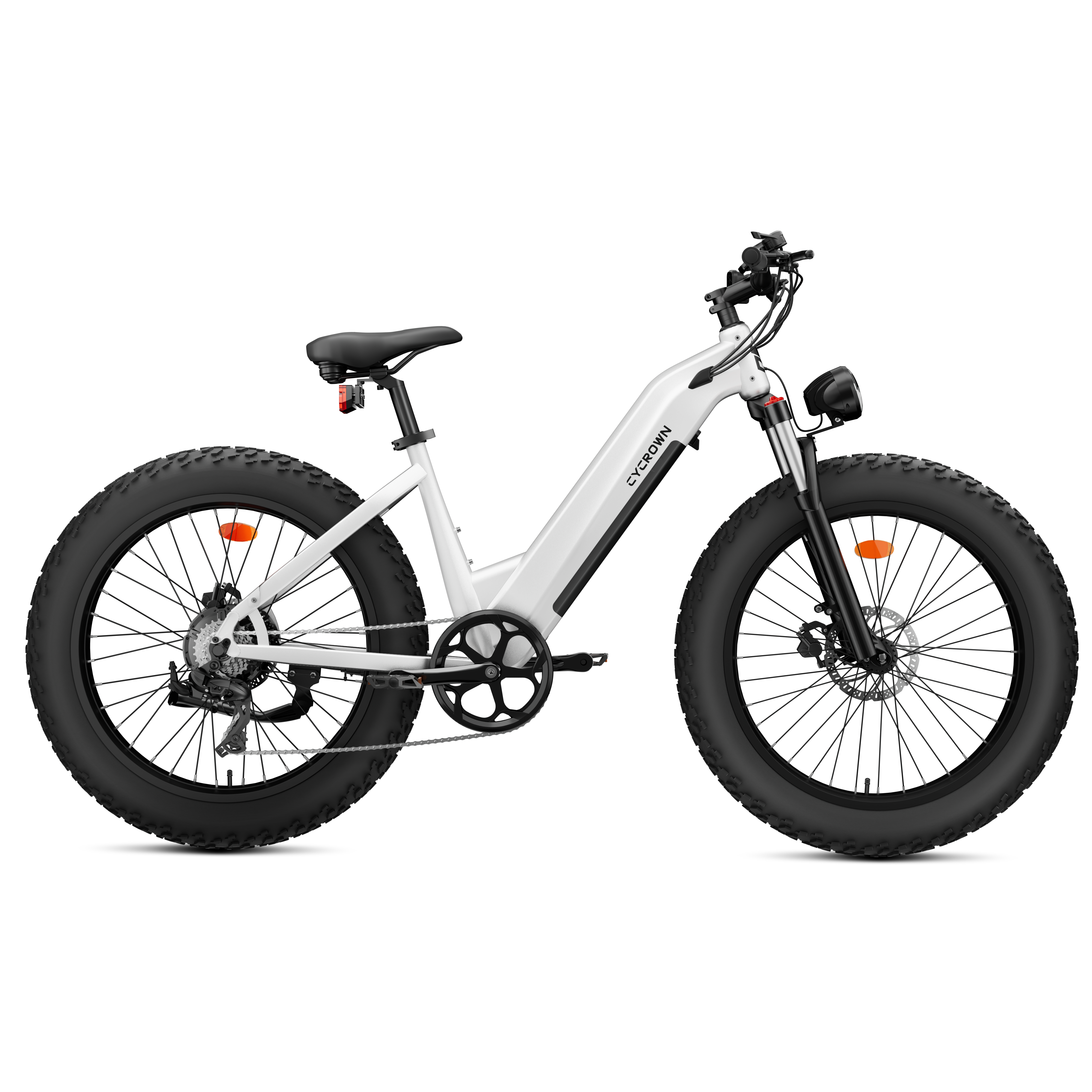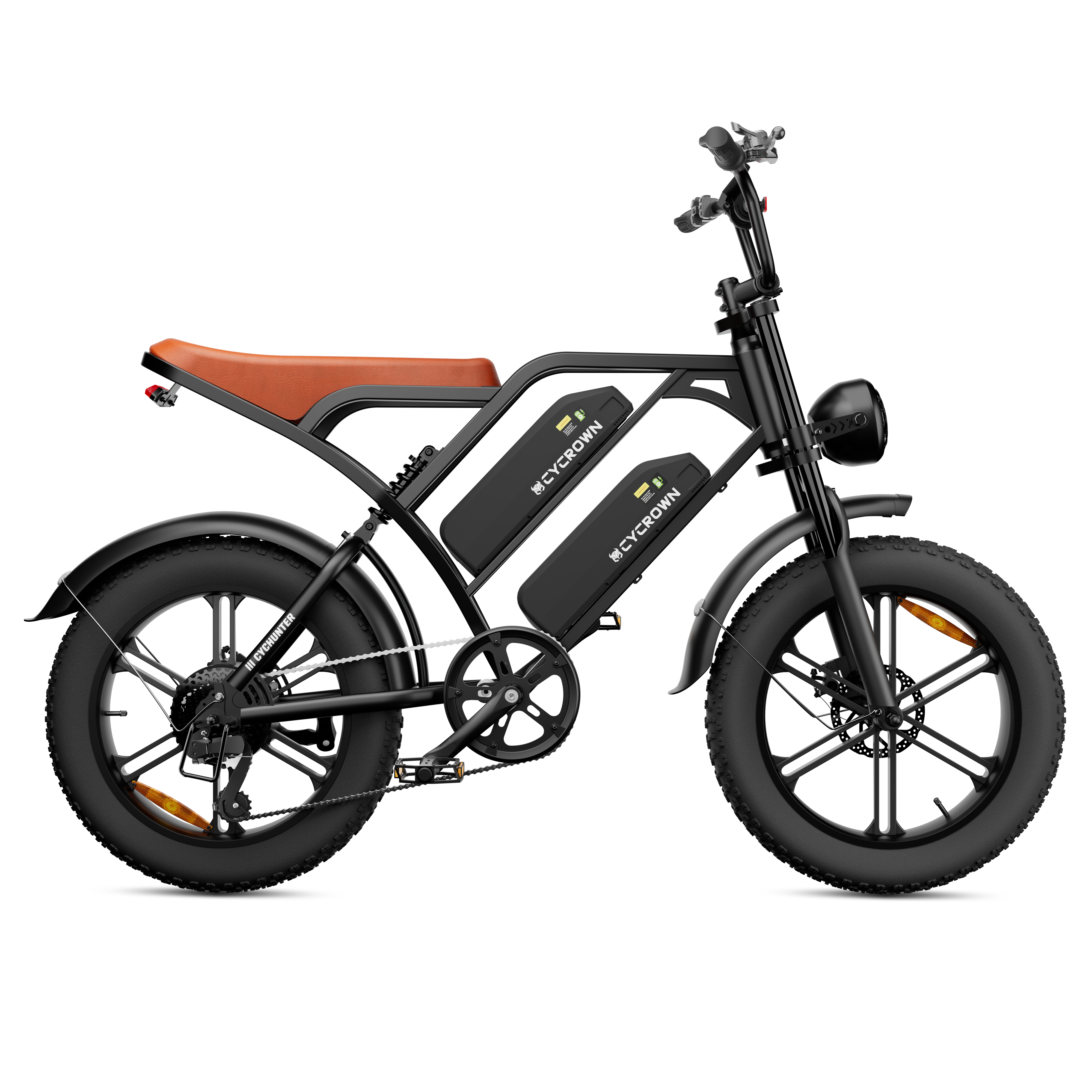Electric bikes, also known as e-bikes, have been gaining popularity in recent years due to their environmental, economic, and practical benefits. E-bikes use electric motors and batteries to provide power assistance, making cycling easier and more accessible for people of all ages and abilities. They are a great option for commuting, running errands, or just having fun.
Understanding how electric bikes work can help you make an informed decision when choosing a bike that's right for you. Whether you're looking for a more eco-friendly mode of transportation, a way to save money on gas and parking, or just a fun way to explore your city, e-bikes are a great choice.
In the following sections, we'll take a closer look at each of the components that make up an electric bike, and how they work together to provide a smooth and efficient ride.
Understanding Electric Bikes

Electric bikes, also known as e-bikes, are bicycles that are powered by an electric motor. They are becoming increasingly popular due to their convenience and eco-friendliness. In this section, we will discuss the components of an e-bike, types of electric motors, and battery technology.
Components of an E-Bike
An electric bike consists of several components, including an electric motor, battery, controller, throttle, and sensors. The electric motor is the heart of the e-bike, and it can be either a hub motor or a mid-drive motor. The hub motor is located in the wheel hub, while the mid-drive motor is located near the pedals. The controller regulates the power output of the motor, and the throttle controls the speed of the bike. The sensors detect the rider's pedaling and adjust the power output accordingly.
Types of Electric Motors
There are two types of electric motors used in e-bikes: hub motors and mid-drive motors. Hub motors are mounted in the center of the wheel hub, while mid-drive motors are located near the pedals. Hub motors are generally less expensive and require less maintenance, while mid-drive motors provide better performance and hill-climbing ability.
Battery Technology
The battery is a crucial component of an e-bike, and it provides power to the electric motor. Lithium-ion batteries are the most common type of battery used in e-bikes. They are lightweight, have a long lifespan, and can be recharged quickly. The battery pack is usually located on the downtube of the bike frame, but some e-bikes have a removable battery pack that can be charged separately.
How Do Electric Bikes Work

Electric bicycles, or e-bikes, are becoming increasingly popular for their convenience and eco-friendliness. If you're new to e-bikes, you may be wondering how they work. In this section, we'll discuss the key components that make an e-bike run.
1. The Motor
The motor is the heart of an e-bike. It generates the power that propels the bike forward. There are two types of motors commonly used in e-bikes: hub motors and mid-drive motors.
Hub motors are located in the wheel hub and provide direct power to the wheel. They're generally less expensive and easier to maintain than mid-drive motors. Mid-drive motors are located near the bike's bottom bracket and provide power to the chain, giving the bike more torque and better hill-climbing ability.
2. The Battery
The battery is what powers the motor. Most e-bikes use lithium-ion batteries due to their high energy density and long lifespan. The battery's placement on the bike varies depending on the model, but it's usually located on the downtube or rear rack.
The battery's charging time can range from a few hours to overnight, depending on the model. On average, a fully charged battery can provide a range of 20-50 miles, depending on the bike's power output and the rider's weight. The battery's lifespan can vary depending on usage and maintenance, but most batteries last 2-5 years.
The Controller
The controller regulates the power from the battery to the motor based on input from the user or sensors. It's responsible for managing the bike's speed, acceleration, and pedal assistance level. The controller can be adjusted to change the bike's power output and pedal assistance level.
Pedal Assist and Throttle Mechanisms
E-bikes can be operated using either pedal assist or a throttle mechanism. Pedal assist uses sensors to detect the rider's cadence and torque input, providing assistance based on the chosen pedal assistance level. Throttle mechanisms provide power directly to the motor, allowing the rider to control the bike's speed using a hand throttle.
Related Post: Electric Bike Throttle: How It Works Explained
How Electric Bikes Generate Power
Electric bikes generate power by utilizing a motor that is powered by a battery. The motor can either assist pedaling or provide full motor power, depending on the level of assistance selected by the rider. The battery provides electrical energy to the motor, which then converts it into mechanical energy to move the bike.

The motor is typically located in the hub of either the front or the rear wheel, or mounted centrally near the pedals. When the rider pedals, the motor senses the motion and begins to assist. The level of assistance can be adjusted by the rider through a control panel on the handlebars.
Energy conversion and efficiency are important factors in e-bike systems. The battery provides a certain amount of energy, which is then converted into mechanical energy to move the bike. The efficiency of this conversion can vary depending on the quality of the motor and other components. A higher quality motor and battery can provide greater efficiency and longer battery life.
Advantages of Electric Bikes
Electric bikes offer a variety of benefits that make them an attractive alternative to traditional bikes or cars. Here are some advantages of electric bikes:
-
Reduced Commuting Time: Electric bikes can help you get to your destination faster than traditional bikes. With the electric motor assisting you as you pedal, you can cover more distance in less time. This can be especially useful if you have a long commute or if you live in a city with heavy traffic.
-
Increased Accessibility for Different Fitness Levels: Electric bikes can be a great option for people who want to get into cycling but are intimidated by the physical demands of traditional bikes. With the electric motor providing assistance, you can pedal at your own pace and get a workout that's tailored to your fitness level.
-
Utility in Hilly or Challenging Terrains: Electric bikes can make it easier to tackle hills or challenging terrains that might be difficult with a traditional bike. With the electric motor providing assistance, you can climb hills with less effort and enjoy the ride without feeling exhausted.
-
Environmentally Friendly: Electric bikes are a more environmentally friendly mode of transportation than cars. They produce zero emissions and can help reduce traffic congestion and air pollution.
-
Cost-Effective: While electric bikes can be more expensive than traditional bikes, they can be a cost-effective alternative to cars. They require less maintenance and fuel costs, and they can help you save money on transportation in the long run.
Electric Bike Voltage Explained

What Is Voltage?
Voltage is a measure of the electric potential difference between two points in an electric circuit. It is measured in volts (V). In an electric bike, voltage is the amount of electrical potential that the battery can provide to the motor. The higher the voltage, the more power the motor can receive.
How Does Voltage Impact an Electric Bike's Operation?
The voltage of an electric bike's battery has a significant impact on its performance. A higher voltage battery can provide more power to the motor, which results in faster speeds and better acceleration. However, it is important to note that higher-voltage batteries are often heavier and more expensive.
Most electric bikes have a voltage range of 24V to 72V. A 24V battery is suitable for a low-powered electric bike, while a 72V battery is best suited for a high-powered electric bike. It is important to choose the right voltage for your electric bike based on your needs and preferences.
In addition to voltage, the capacity of the battery is also an important factor to consider. The capacity is measured in ampere-hours (Ah) and represents the amount of energy the battery can store. A higher-capacity battery can provide more range, but it is also heavier and more expensive.
Conclusion
In summary, electric bikes work by utilizing an electric motor to assist while pedaling, making riding easier and more enjoyable. The motor is powered by a battery, which can be charged like any other electronic device. Electric bicycles offer different modes of operation, including pedal assist and throttle. Different classes of electric bikes have different levels of assistance, speed, and power output.
If you're considering an electric bike, it's important to think about how it might fit into your lifestyle or commuting habits. Electric bikes can be a great option for those who want to get around quickly and efficiently without the hassle of traffic or parking. They can also be a good choice for those who want to get some exercise while commuting or running errands.
When choosing an electric bike, it's important to consider factors such as battery life, motor power, and the type of riding you'll be doing. Mid-drive motors integrate well with bike gears for a smoother ride on hills and rough terrain, while hub motors are simpler and less expensive.
Frequently Asked Questions
Do you still have to pedal an electric bike?
Yes, you still have to pedal an electric bike, but with the assistance of an electric motor. The motor helps you to maintain or increase your speed with less effort. You can adjust the level of assistance to suit your needs, from low to high. With the motor on, you can reach speeds of up to 20 mph, depending on the model and the terrain.
Do electric bikes charge as you ride?
Some electric bikes are equipped with regenerative braking, which means that they can charge the battery as you ride. When you brake or coast, the motor turns into a generator, which produces electricity that is stored in the battery. However, this feature is not available on all electric bikes, and it only provides a small amount of charge.
How does an electric bike operate?
An electric bike operates by combining human power with electric power. When you pedal, the motor provides assistance to make pedaling easier and more efficient. The motor is powered by a rechargeable battery, which can be charged using a wall socket or a portable charger. The battery typically lasts for 20-50 miles on a single charge, depending on the model and the terrain.
How healthy is riding an electric bike?
Riding an electric bike can be as healthy as riding a regular bike, depending on how you use it. If you use the motor to assist you on hills or when you are tired, you can still get a good workout. However, if you rely too much on the motor and don't pedal at all, you won't get as much exercise. It's important to find a balance that works for you.
Do you need insurance on an electric bike?
In most cases, you don't need insurance on an electric bike, but it depends on the laws in your area. Some states or countries require that electric bikes be registered and insured, while others don't. It's a good idea to check with your local authorities to find out what the rules are in your area.










